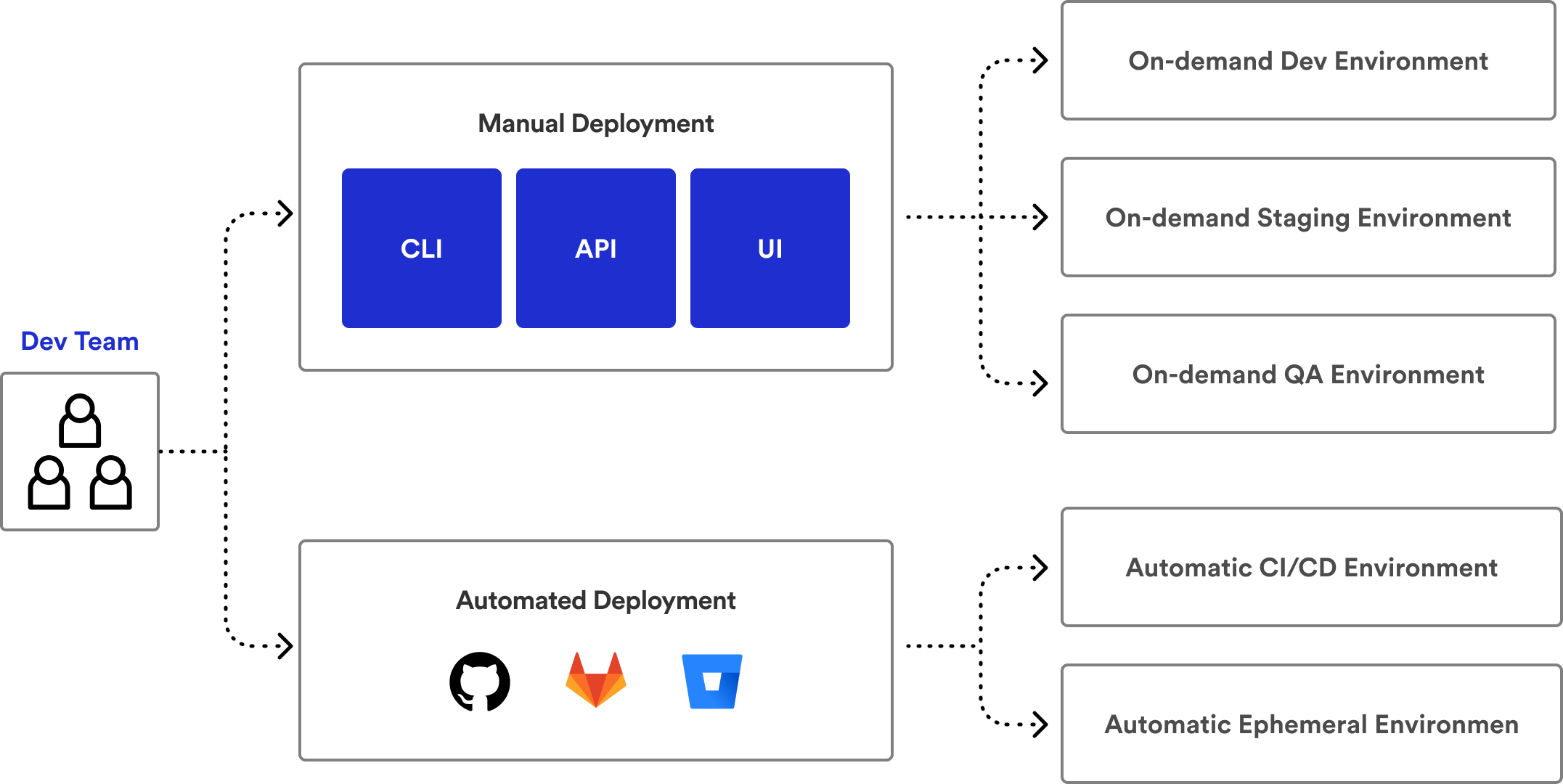Accelerating Product Delivery: A CTO's Guide to Automating Development Environments
In today’s fast-paced tech industry, CTOs of growing scaleups face the challenge of delivering products faster while maintaining high quality and controlling costs. One powerful way to tackle this challenge is by automating development environments, which can significantly improve productivity, reduce errors, and speed up the entire development process. In this guide, we’ll explore the benefits of automating development environments and explain why CTOs should prioritize this approach to accelerate product delivery and stay competitive.
1. The Pain Points of Manual Development Environment Management
For scaleups, manually managing development environments can lead to significant inefficiencies. As teams grow and products become more complex, managing environments without automation becomes more error-prone and resource-intensive. Common pain points include:
- Slow Setup Times: Developers waste valuable time manually configuring environments rather than coding.
- Inconsistent Environments: Differences between local, staging, and production environments can lead to bugs that are difficult to trace.
- Testing Bottlenecks: Teams often face delays while waiting for shared environments to be available, slowing down the feedback loop
These issues can significantly delay product delivery and create operational inefficiencies. By automating the process, you can reduce these bottlenecks and improve overall development velocity.
2. What Are Automated Development Environments?
Automated development environments are dynamically created, on-demand replicas of your production environment that can be spun up at any stage of development. Whether for feature development, testing, or staging, these environments are automatically created and torn down as needed, allowing teams to work in isolated, consistent environments.
By implementing automated environments, developers can:
- Instantly create production-like environments for testing code, without the manual setup.
- Isolate their changes to avoid impacting others on the team.
- Thoroughly test new features before merging them into the main branch, reducing the risk of bugs.
Platforms like Bunnyshell make automating ephemeral environments easy by allowing full-stack environments to be created for every pull request.

3. Why Automating Development Environments Speeds Up Product Delivery
a. Faster Feedback Loops
Automating environments speeds up feedback loops by allowing developers to test code in isolated environments as soon as they submit a pull request. Instead of waiting for shared environments to become available, they get immediate feedback. This reduces the time spent identifying and fixing bugs and ensures that issues are addressed early in the development process.
b. Improved Code Quality
With automated, consistent environments, developers work in replicas of production, reducing discrepancies that lead to bugs. By catching issues in an environment that mirrors production, teams can ensure better code quality before anything is merged.
c. Boosted Developer Productivity
Automating environment setup frees developers from spending hours configuring infrastructure. By focusing more on writing code and less on setting up environments, your team can release features faster, improving overall productivity.
d. Enhanced Collaboration
For scaleups, team collaboration is critical to success. Automated environments allow developers, product managers, and other stakeholders to view and interact with the latest feature versions in real-time, enabling faster feedback and decision-making.
4. How to Implement Automated Development Environments
For CTOs looking to implement automated environments, the process starts with selecting the right tool. Bunnyshell, for example, provides an Environment-as-a-Service (EaaS) platform that simplifies the creation and management of ephemeral environments. Here’s a step-by-step approach:
Step 1: Identify Bottlenecks in Your Current Workflow
Examine your development process and pinpoint where delays occur, whether it’s in testing, staging, or deployment. Identifying these bottlenecks will help prioritize where automation will be most effective.
Step 2: Choose the Right Automation Tool
Look for a tool that integrates seamlessly with your existing tech stack, CI/CD pipeline, and infrastructure. Bunnyshell works with Kubernetes and Docker to simplify environment management, ensuring consistent and efficient workflows.
Step 3: Start Small and Scale
Begin by automating environments for specific development stages, such as testing or feature branches. As your team becomes familiar with the process, gradually extend automation to staging and production.
Step 4: Monitor and Optimize
Track key performance indicators (KPIs) like setup times, deployment frequency, and feedback loop duration. Use this data to continually optimize the automation process and improve development velocity.
5. The ROI of Automating Development Environments for Scaleups
For scaleups, automating development environments delivers a strong return on investment. By reducing setup times, improving feedback loops, and ensuring more consistent environments, companies can:
- Accelerate product delivery: Teams release new features faster, keeping the company competitive.
- Boost developer efficiency: Developers spend more time coding and less time dealing with infrastructure.
- Reduce infrastructure costs: Ephemeral environments can be torn down when not in use, minimizing waste.
Furthermore, automated environments provide scalability, allowing your development process to grow in complexity without becoming more difficult to manage. As your teams and projects expand, the ability to maintain consistent, efficient processes will be key to your company’s success.
Conclusion
For CTOs of growing scaleups, automating development environments is an essential step toward faster, more efficient product delivery. By reducing delays, ensuring consistency, and improving collaboration, automation helps development teams stay focused on what matters—building and releasing innovative products. Tools like Bunnyshell make automating ephemeral environments easy, enabling CTOs to drive operational efficiency and scalability.
In today’s competitive tech environment, investing in automation isn’t just about delivering products faster; it’s about delivering them better. By prioritizing the automation of your development environments, you can help your company scale with confidence and keep your teams agile and efficient.

